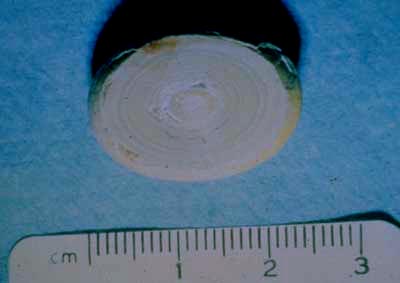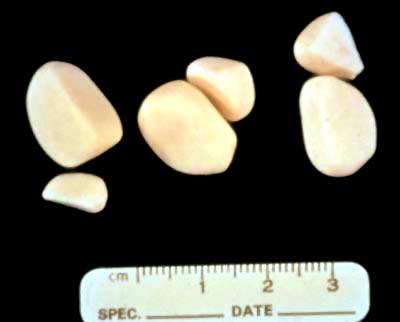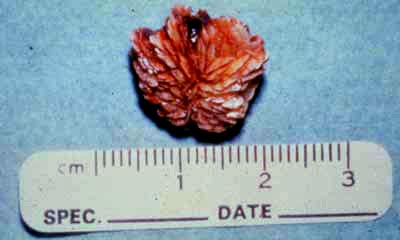Cystotomy
Introduction
- To access bladder lumen.
Uses
Indications
- Removal of cystic calculi in patients non-responsive to medical management, or male dogs with risk of obstruction, when other methods are not available Urolithiasis. Retrohydropulsion Urethra: retrograde urohydropulsion or urethrotomy Urethrotomy may be indicated to deal with urethral obstruction Urethra: obstruction.
- Catheterize ureters.
- Placement of ureteral stents.
- Bladder neoplasia Bladder: neoplasia.
- Repair of rupture Bladder: trauma rupture.
- Management of urethral rupture Urethra: rupture.
- Vesico-ureteral anastomosis Ureter: anastomosis.
- Investigation of hematuria Hematuria.
- Investigation of recurrent urinary tract infection (UTI) to sample calculi/bladder mucosa Cystitis.
Advantages
- Easy to perform.
- Minimal morbidity.
- Requires minimal equipment.
Disadvantages
- More invasive than catheter or cystoscopic retrieval of calculi Cystoscopy: transurethral cystoscopy/vaginoscopy , or medical management.
- Risk of disseminating bladder neoplasia (TCC) Bladder: neoplasia.
- Hematuria/clinical signs of cystitis post-operatively.
Alternative techniques
Cystic calculi
- Dietary adjustment and medical dissolution (diet for cysteine stones Dietetic diet: decreasing risk of cystine stones (uroliths) , diets for struvite stones Dietetic diet: dissolving and decreasing risk of struvite stones (uroliths) , diet for urate stones Dietetic diet: decreasing risk of urate stones (uroliths) ).
- Voiding urohydropulsion.
Urethral obstruction
- Retrohydropropulsion Urethra: retrograde urohydropulsion.
If successful, should follow this with cystotomy and retrograde flushing of the urethra to prevent re-obstruction. - Urethrotomy Urethrotomy.
Time required
Preparation
- 30 min.
- Clip and aseptically prepare caudal abdomen.
Procedure
- 60-90 min depending on reason for cystotomy.
Decision taking
Criteria for choosing test
- Identify the type of stone before management if possible, ie struvite
 , cysteine
, cysteine  , urate
, urate  , oxalate
, oxalate  , etc.
, etc. - Urine should always be cultured Urinalysis (bladder mucosa and any calculi should also be cultured to increase yield).
Risk assessment
- If animal has urinary obstruction care with anesthesia as biochemical parameters, electrolyte and acid-base balance may be upset. Always obtain blood tests before surgery.
- Fluid therapy is mandatory Fluid therapy: for acid-base imbalance especially if animal uremic Uremia.
- Attempts should be made to resolve metabolic anomalies prior to anesthesia/surgery.
Requirements
Subscribe To View
This article is available to subscribers.
Try a free trial today or contact us for more information.
Preparation
Subscribe To View
This article is available to subscribers.
Try a free trial today or contact us for more information.
Technique
Subscribe To View
This article is available to subscribers.
Try a free trial today or contact us for more information.
Aftercare
Subscribe To View
This article is available to subscribers.
Try a free trial today or contact us for more information.
Outcomes
Subscribe To View
This article is available to subscribers.
Try a free trial today or contact us for more information.
Further Reading
Publications
Refereed papers
- Recent references from PubMed and VetMedResource.
- Osbourne C A, Lulich J P, Kruger J M et al (2008) Analysis of 451,891 canine uroliths, feline uroliths, and feline urethral plugs from 1981 to 2007: perspectives from the Minnesota Urolith Center. Vet Clin North Am Small Anim Pract 39 (1), 183-97 PubMed.
- Houston D M, Moore A E, Favrin M G et al (2004) Canine urolithiasis: a look at over 16,000 urolith submissions to the Canadian Veterinary Urolith Centre from February 1998 to April 2003. Can Vet J 45 (3), 225-230 PubMed.
- Collins R L, Birchard S J, Chew D J et al (1998) Surgical treatment of urate calculi in Dalmatians - 38 cases (1980-1995). JAVMA 213 (6), 833-838 PubMed.
- Schiller T D, Stone E A & Gupta B S (1993) In vitro loss of tensile strength and elasticity of five absorbable suture materials in sterile and infected canine urine. Vet Surg 22 (3), 208-12 PubMed.
- Peterson S L (1991) Cystotomy closure - a comparison of the strength of appositional and inverting suture patterns. Vet Surg 20 (2), 83 PubMed.
- Radasch R M, Merkley D F, Wilson J W et al (1990) Cystotomy closure. A comparison of the strength of appositional and inverting suture patterns. Vet Surg 19 (4), 283-288 PubMed.
- Crowe D T (1986) Ventral vs dorsal cystotomy - an experimental investigation. JAAHA 22 (3), 382-86 VetMedResource.
- Desch J P, Wagner S D (1986) Urinary bladder incisions in dogs: comparison of ventral and dorsal. Vet Surg 15 (2), 153-155 VetMedResource.
- Stone E A (1984) Surgical therapy for urolithiasis. Vet Clin North Am Sm Anim Pract 14 (1), 77-92 PubMed.